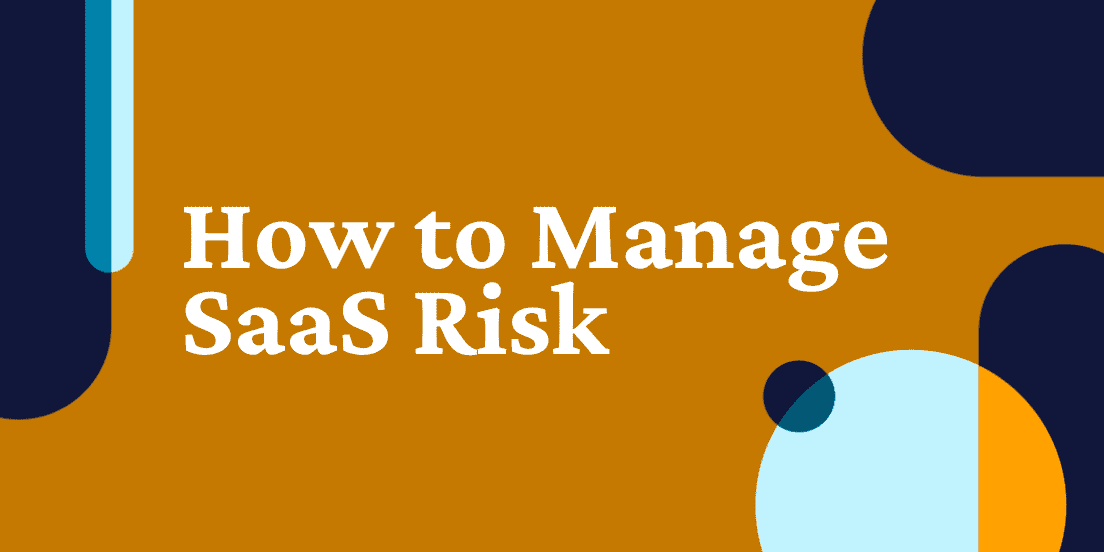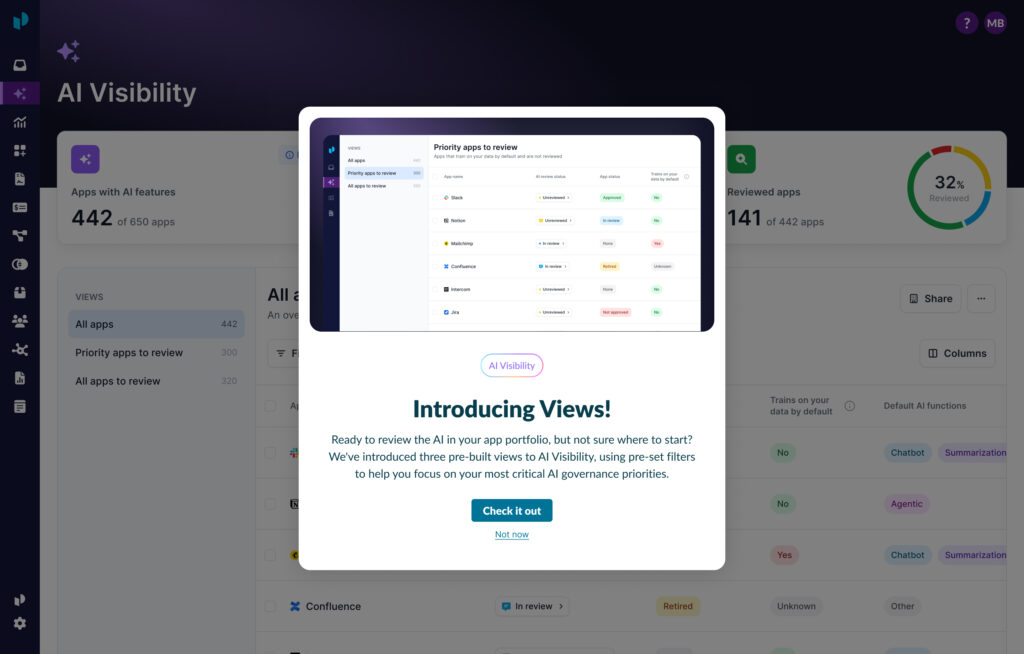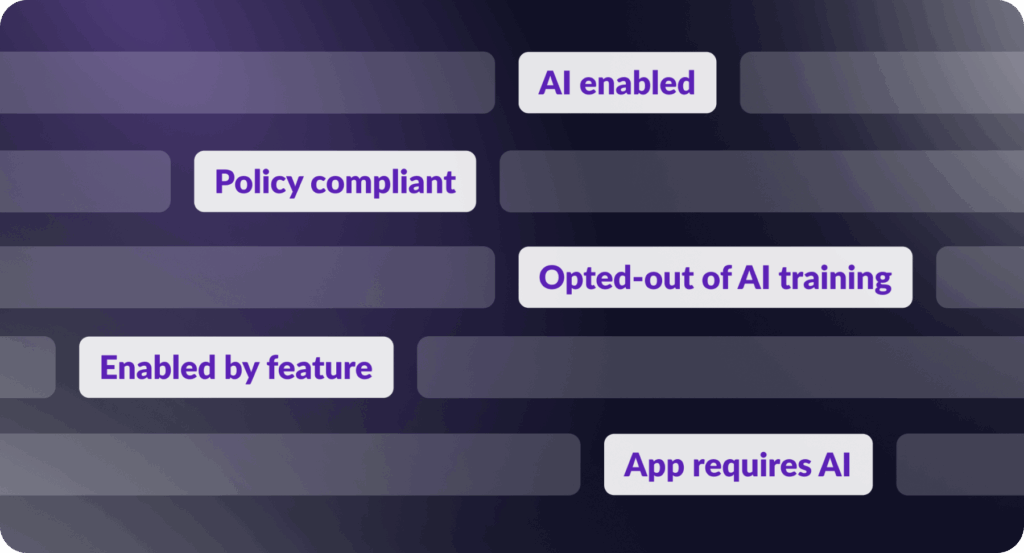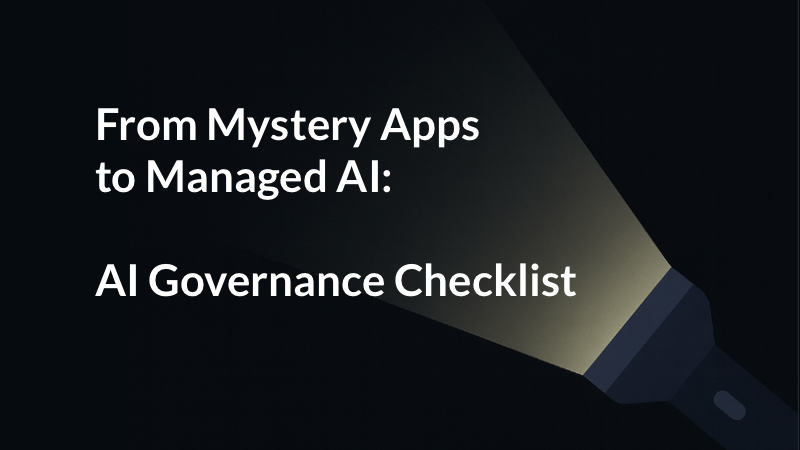
How to Mitigate the Top 5 Risks of SaaS at Scale
As you scale your company, your SaaS applications and platforms also have to scale. Yet, as SaaS applications and platforms scale up, they bring a set of risks that can affect your entire business. Fortunately, there are also ways to mitigate those risks with effective SaaS risk management so that you can continue to grow and thrive.
As an IT leader responsible for your application portfolio, understanding these risks will not only help make your business more secure and cost effective, but it will allow you to bring a level of transparency to your operations that will help you build better relationships with your functional business leaders.
Read on to learn what the top five SaaS risks are and how to mitigate them effectively.
What is SaaS risk management?
SaaS risk management is the process of identifying, analyzing, and mitigating the risks associated with using SaaS applications. As part of your SaaS risk management strategy, you’ll want to catalog all of the applications your organization uses, evaluate the vendors, monitor security and compliance, and more.
What are the top SaaS risks organizations?
Adopting SaaS at scale poses several challenges and creates a number of risks. The top five SaaS risks are:
- Governance
- Data privacy
- Cost
- Employee experience
- Long-term application strategy
5 tips for SaaS risk management
Increase SaaS governance
Governance is a significant risk as your SaaS applications scale up. As your company grows, the number of users, as well as the number of applications, rises too. There’s also quite a bit of data floating around.
What are the two reasons that lack of governance is a risk?
- Financial
- Security
From a financial standpoint, inadequate governance wastes money. You’re paying for SaaS applications and platforms, yet you don’t know who’s using them, how much they’re being used, or if these apps and platforms are even being used to their fullest potential. Moreover, research shows that without appropriate SaaS governance, your bottom line suffers. Studies demonstrate that organizations with above-average governance have over 20% higher revenue than their peers following a similar IT strategy.
The effects of poor SaaS governance can be more immediate if you’re looking through a security lens. Because you don’t know who’s using these apps, or how they’re being used, they represent a significant security risk. Research from the Cloud Security Alliance shows that over three-quarters of organizations that have adopted SaaS have experienced security incidents directly related to those applications.
Ensure data privacy
Another SaaS risk that’s connected to security is data privacy. And the importance of data privacy has grown with the increase of laws regulating how companies can handle individuals’ data.
When firms don’t practice proper SaaS governance, they can’t guarantee that all of the apps and platforms they are using fulfill legal and compliance requirements. As a result, they don’t know whether they are compliant with data privacy laws. Even if an app itself might be compliant, no governance means that the company doesn’t know how the app is being used.
Control SaaS costs
The cost of your SaaS apps isn’t a major concern when you first launch your company. You’re saving money because you’re not paying capital expenses. But what happens as you grow? That app that you originally thought of as a nice-to-have becomes an essential part of your processes, and for all of your employees to use it, you have to upgrade to the more expensive enterprise tier.
What other issues impact SaaS costs?
- Are employees using all of the apps and platforms to which you’ve subscribed?
- Is there any overlap between apps (for example, you might be paying for G-Suite, yet employees have set up Slack for messaging)?
- Are there orphaned apps (apps with no clear owner and no proof anyone is using them)?
Our research into SaaS sprawl show that organizations on average use over 300 SaaS apps. And just over half of those apps are shadow IT, or apps not owned or managed by IT. If those apps aren’t being governed or managed effectively, companies will find themselves wasting money on apps that don’t drive their business forward.
Improve employee experience
The concept of employee experience might not sound like it’s related to SaaS risks, yet there’s a strong connection. Moreover, employee experience, SaaS apps, and costs are also linked.
A well-curated SaaS app portfolio enhances employees’ experience. It enables them to collaborate better and improve their productivity. Conversely, a bad app, or lack of access to the right app, or even not understanding which application to use when, has a negative impact on the employee experience. We surveyed enterprise tech leaders and found that over a third of employees reported low productivity because they couldn’t use the apps they needed.
When employees have a good experience, the company benefits. Research from Gartner shows that employees who are largely satisfied with their jobs are:
- 52% more likely to report high discretionary effort at the workplace
- 69% more likely to be high performers
- 48% more likely to meet the organization’s customer satisfaction goals
- 59% more likely to meet the organization’s innovation goals
- 56% more likely to meet the organization’s reputation goals
Create a long-term application strategy
When you establish your business, you’re focused on growth. You choose SaaS apps based on which ones can help you achieve your goals. As your business scales up, you might find your control over SaaS apps slips; at a certain point, you discover that apps have been chosen without any clear strategic direction.
As a result, your company might be:
- Using apps that don’t support business goals
- Subscribed to overlapping apps that cost the company money
- Utilizing only some of an app’s features
- Using apps that don’t enable collaboration or foster productivity
Top 5 SaaS risk management tips
The plethora of SaaS applications can present risks as your company scales. Fortunately, you can mitigate SaaS risk using the following methods:
- Create a SaaS app visibility strategy
- Understand contractual obligations to SaaS vendors
- Gain insight into the employee experience
- Align your app strategy with your business strategy
- Build a roadmap for application adoption
1. Create a SaaS app visibility strategy
Addressing governance issues requires a clear strategy to gain visibility into your SaaS application portfolio. How do you create such a strategy, though?
You could manually track SaaS applications and platforms manually – our research shows that 56% of IT executives still rely on those methods to gain visibility into their apps.
However, it’s difficult to track apps manually. Someone has to be in charge of updating them when more licenses are added, or when new apps are added. Additionally, manual data entry methods have an average error rate of 1%, so you can assume that this type of tracking is never completely accurate.
Choosing the right tools to gain visibility into SaaS apps
Automating the SaaS app visibility process will significantly reduce errors in tracking this software. Today, there are SaaS app management solutions on the market that allow you to track your SaaS subscriptions effectively and accurately.
That being said, not all SaaS management software is created equally.
For your SaaS app visibility strategy to be successful, you need to choose a solution that doesn’t just track the number of licenses you have, or which apps you use. It needs to give you a deeper understanding of how apps are being used. We’ll explore what this means in the following sections.
2. Understand your contractual obligations with to SaaS vendors
When you think of contractual obligations to your SaaS vendors, the first thing that likely comes to mind is cost. However, there may actually be a second contractual obligation: usage.
It’s possible that only a certain number of users can utilize the app at a given time under the limitations of your contract. Or, perhaps you receive certain features as part of the contract, even if you’re not using them.
This is where choosing the right tools for SaaS visibility comes into play. Productiv provides you with greater visibility into your SaaS applications, so you can see whether users are maximizing all of an app or platform’s functionalities, or if they’re using the most basic features. This knowledge is vital when heading into contract renewal negotiations.
3. Gain insight into your employee experience
Your technology stack has a significant impact on your employee experience. If employees can’t collaborate effectively, they feel disengaged and unmotivated.
Research from Forrester published in March 2020 shows that employees in the lowest half of the analyst firm’s employee engagement index were most likely to be dissatisfied with their employer’s technology stack.
Partnering with a line-of-business manager who understands what apps and platforms employees are using is crucial. This partnership gives you deeper insight into how employees feel about the SaaS apps they use because if you’re not giving employees what they want, they’ll have a poor experience.
However, this doesn’t erase the need for a SaaS visibility tool – in fact, far from it. With the right SaaS app visibility solution, you have hard data that demonstrates how employees are engaging with an app or platform, and whether they’re getting the most value out of all of an app’s features.
4. Align your app strategy with your business strategy
To mitigate SaaS risks, you must align your app strategy with your business strategy. That can be challenging when your company has grown, and you might not be aware of all the apps and platforms in use at your firm.
This is where gaining greater visibility into your SaaS apps and platforms comes in. When you understand what apps and platforms your company is using, you can determine which apps fit into your overall strategy, and which apps aren’t helping you move forward.
When formulating an app strategy, you will need to answer the following two questions:
- How do you determine which SaaS apps your company really needs?
- Which SaaS apps are the best fit for your business strategy?
The apps will depend partially on your business and industry. If you’re in financial services, you’ll need related apps. However, there are some apps that are fairly universal; apps that enable employees to communicate and collaborate create value for businesses. It’s also important to remember that apps must be compliant with whatever regulations by which you’re bound.
5. Build a roadmap to application adoption
The final step to mitigating SaaS risks is building a roadmap to application adoption. A roadmap acts as a timeline for the app rollout. Timelines set realistic expectations – employees understand when they’ll be able to use an app.
Creating a roadmap is also useful because it cultivates a partnership between the IT department and line-of-business departments. You’re demonstrating that you want to make the workforce productive and effective while also weighing critical principles such as security and cost.
Productiv can help you with SaaS risk management
Productiv’s SaaS management software gives you visibility into your SaaS application portfolio so you can make better decisions for the entire business. To learn more, request a demo.
About Productiv:
Productiv is the IT operating system to manage your entire SaaS and AI ecosystem. It centralizes visibility into your tech stack, so CIOs and IT leaders can confidently set strategy, optimize renewals, and empower employees.





